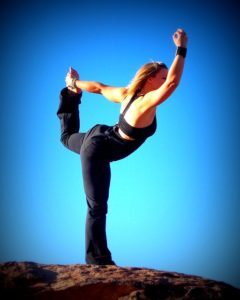How to control your back pain with yoga.

As many as ¼ of U.S. adults report low back pain, lasting a whole day or more, at some point in the last 3 months. It is the second most common cause to visit a physician and 3rd most common reason for surgery. Low back pain is frequently associated with anxiety, depression and reduced quality of life. “Yoga” means a “yoking” or a harmonious relationship between the mind and body. Another benefit of yoga is the spiritual and social aspect. Many studies show the beneficial effects such as decreased depression and anxiety but the mechanism is still not well established. Several studies show the benefits for yoga for reducing low back pain. The proposed ways yoga does this is through several mediators such as serotonin, cortisol, dehydroepiandrosterone (DHEA), and brain derived neurotrophic factor (BDNF). From a safety perspective, yoga appears safe and there does not appear to be any safety concerns even if a person has a bulging disk. Overall, yoga appears to be an effective and safe intervention to not only help chronic low back pain but also anxiety and depression as well.
The Research
J Orthop Rheumatol. 2016 Jan 1;3(1):1-8.
Yoga as a treatment for chronic low back pain: A systematic review of the literature.
Chang DG1, Holt JA1, Sklar M2, Groessl EJ3.
- 1Department of Orthopaedic Surgery, University of California, San Diego, USA.
- 2Department of Psychiatry and Human Behavior, Warren Alpert Medical School of Brown University, Providence, USA.
- 3VA San Diego Healthcare System, San Diego, USA.
Abstract
OBJECTIVES:
Chronic low back pain (CLBP) affects millions of people worldwide, and appears to be increasing in prevalence. It is associated not only with pain, but also with increased disability, psychological symptoms, and reduced quality of life. There are various treatment options for CLBP, but no single therapy stands out as being the most effective. In the past 10 years, yoga interventions have been studied as a CLBP treatment approach. The objective of this paper is to review the current literature supporting the efficacy of yoga for CLBP.
METHODS:
A literature search through the beginning of 2015 was conducted in Pub Med for randomized control trials addressing treatment of CLBP with yoga.
RESULTS:
In this review we evaluate the use of yoga as a treatment for CLBP. Specifically we evaluate how yoga impacts physical functioning and disability, pain, and associated psychological symptoms. We also evaluate possible mediators of the effect of yoga and the safety of yoga.
DISCUSSION:
With few exceptions, previous studies and the recent randomized control trials (RCTs) indicate that yoga can reduce pain and disability, can be practiced safely, and is well received by participants. Some studies also indicate that yoga may improve psychological symptoms, but these effects are currently not as well established.
KEYWORDS:
Chronic pain; Complementary therapies; Low back pain; Muscle stretching exercises; Yoga
PMID:
27231715
PMCID:











